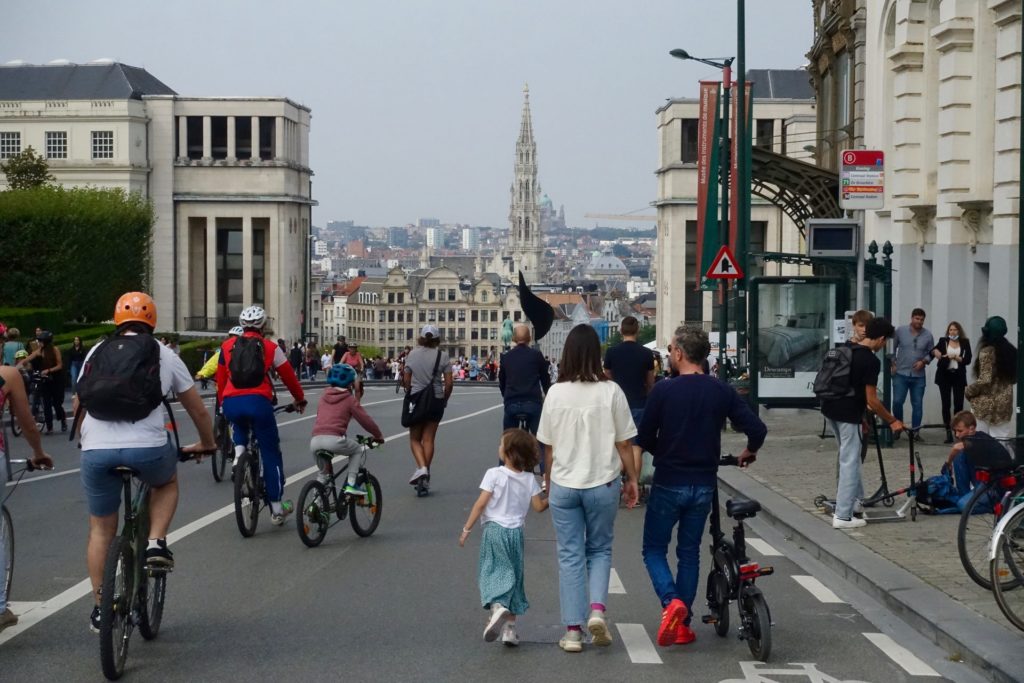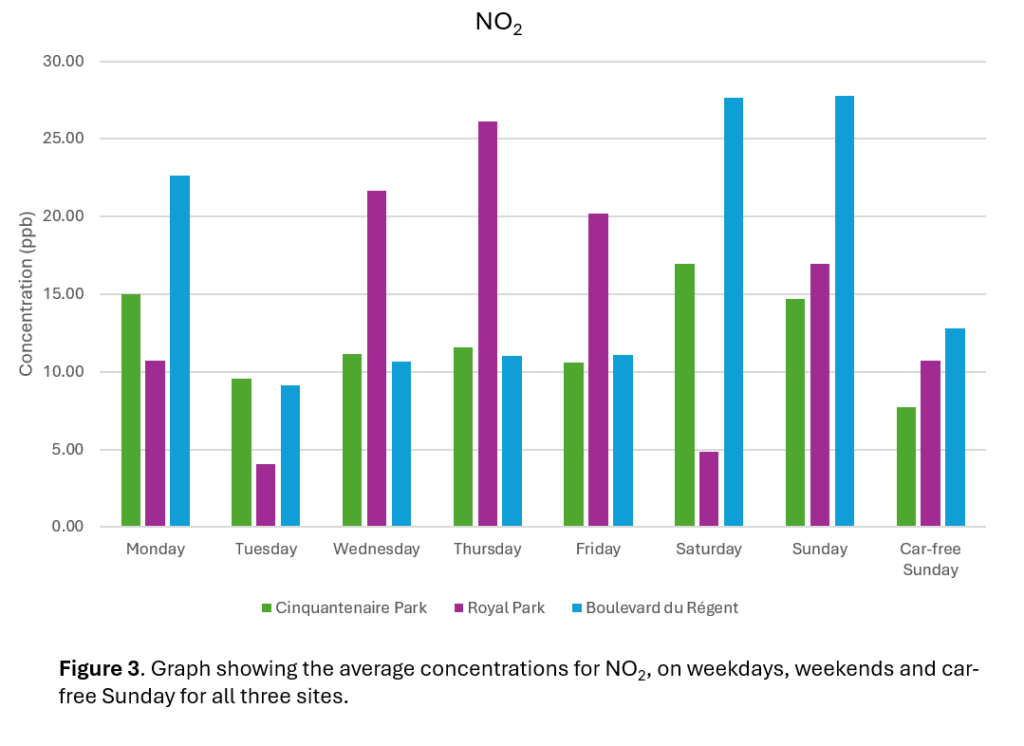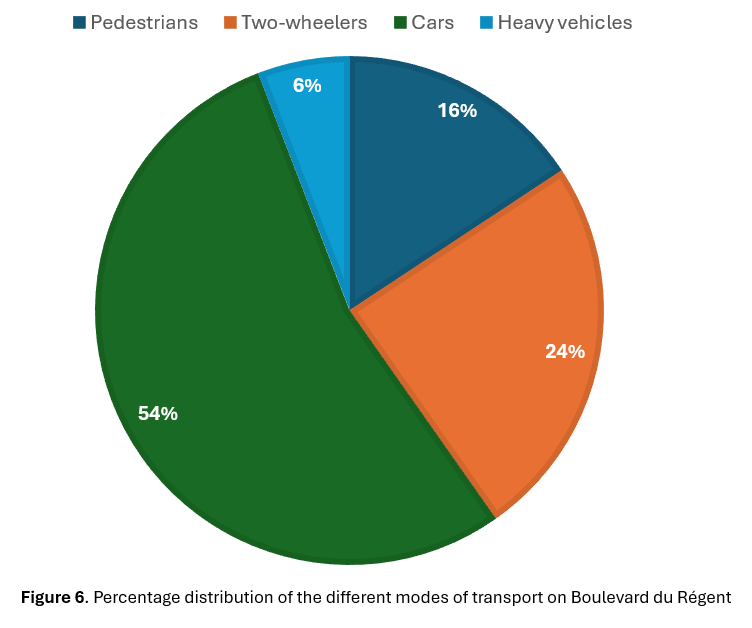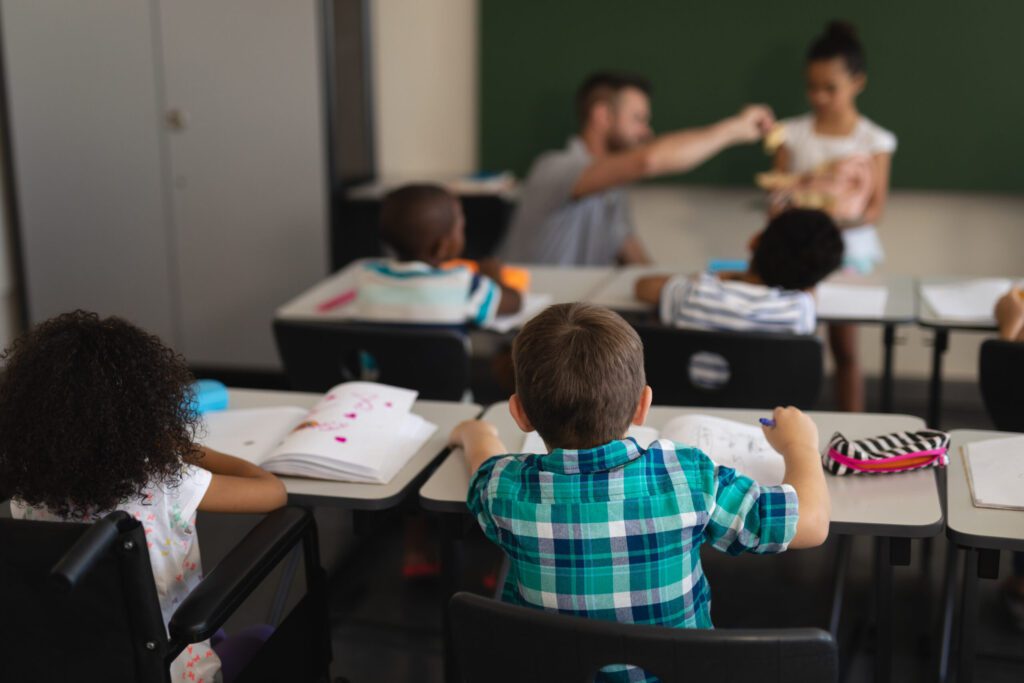Urban green spaces and Car Free day: can parks help purify our air?
The Importance of Air Quality and the Day Without Cars
Air quality plays a vital role in the overall health and well-being of urban populations. Clean air is essential for maintaining respiratory and cardiovascular health, especially for vulnerable groups such as children, the elderly, and individuals with pre-existing conditions. However, urban environments are often hotspots for air pollution, much of which is caused by traffic emissions. The day without cars takes place annually in Brussels, to promote and encourage its citizens to use more sustainable modes of transportation with the goal of reducing these emissions. This venture is of the utmost importance, as emissions in the city can reach consequential concentrations, harming our health and environment.

Traffic Emissions: What are we breathing?
Traffic is a significant source of air pollution, contributing to the release of particulate matter (PM) and nitrogen dioxide (NO2) both of which have detrimental effects on human health. The two primary pollutants, PM2.5 and PM10 represent dust particles that can penetrate the lungs, while NO2 is a gas that can inflame the respiratory system and aggravate conditions like asthma.
The challenge is particularly acute in dense urban centres, where cars, buses, and trucks release significant amounts of these pollutants. Green spaces, such as parks, are often seen as natural solutions to improve air quality by acting as buffers between traffic emissions and the lungs of urban residents. They can absorb pollutants, reduce heat and provide cleaner air for visitors. In Brussels, parks such as Parc Cinquantenaire and Parc Royale are central to urban life, attracting thousands of people daily, from vulnerable populations like the elderly and children to fitness enthusiasts.
But the question remains: can these parks significantly decrease exposure to traffic-related pollution, particularly during peak traffic hours?
Data: Measuring the Air We Breathe
To understand the role parks play in mitigating traffic pollution, data on key pollutants was collected from two major parks in Brussels: Parc Cinquantenaire and Parc Royale.

The focus was on three pollutants: PM2.5 (particulate matter with a diameter of 2.5 microns or less), PM10 (particulate matter up to 10 microns), and nitrogen dioxide (NO2). These daily concentrations would be compared to those on the day without cars, if the concentration is stable than the conclusion is that green spaces do a good job in mitigating urban pollution.

According to the World Health Organization (WHO), the safe thresholds for these pollutants are as follows:
- PM2.5: 5 µg/m³
- PM10: 15 µg/m³
- NO2: 5 ppb
Parc Cinquantenaire and Parc Royale: What the Data Says
- NO2 concentrations in parks: Average levels of nitrogen dioxide (NO2) were higher in parks during the week, probably because of their proximity to busy roads.

- Effect of the weekend and cold weather: At the weekend (14-15/09), NO2 concentrations on Boulevard du Régent increased, potentially due to lower temperatures encouraging more people to use their cars.
- Particulate matter (PM10, PM2.5): Particulate matter was more prevalent on boulevard du Régent throughout the week.

- Effect of the car-free day: PM fell by 33% in the parks and by 20% on the boulevard during the car-free day. For NO2, concentrations fell by 54% on the boulevard and by up to 48% in the parks, showing a significant impact of the car-free day.
- Fine particle concentrations: Weekdays showed morning peaks on the busy road, but more stable levels in the parks.
- Resuspended particulate matter: Paradoxically, car-free Sunday showed higher levels of fine particulate matter during the day in the parks than on the boulevard, probably because of the dust raised by visitors.
- NO2 and morning peak: All three sites show a peak in NO2 during the morning rush hour, indicating that the parks cannot completely neutralise the impact of traffic.

- Trapped pollution: NO2 decreased overall, but higher levels were detected in the parks compared to Boulevard du Régent on car-free day, possibly due to trapped pollution.
Traffic Data: The Road Ahead
Traffic data from Telraam counter placed on Boulevard du Régent, in proximity to Royal Park, show that approximately 6,500 cars pass through this road daily. The hourly distribution of this passage can be found in Figure 6.
The percentage distribution of the modes of transport can be found in the figure below:

The real question: How Much Can Parks Reduce Pollution?
The following strategy was used to answer this question: install sensors in parks surrounded by heavy traffic, compare the daily concentrations of the different pollutants with the concentrations detected on car-free Sunday. If parks are successful in mitigating pollution, there should be a very minor difference in these concentrations, no? During the week, concentrations of particulate matter were up to 35% higher in the parks than on car free day. Nitrogen dioxide sees a similar increase with 33% higher during the week than on the day without cars. The figures above also show peaks occurring during rush hour in both parks – indicating that pollution infiltrates these green areas exposing all visitors to concentrations well above the WHO threshold.
Not even on the day without cars are we free of these pollutants, as once they infiltrate, they are trapped within the confines of the parks, leading to higher concentrations inside the parks than on a boulevard, where these pollutants can be dispersed and diluted by wind.
It is important to keep in mind the effects of traffic emissions, and how they can even enter our green spaces that we go to for “fresh air”. Parks are supposed to be a space to accommodate all forms of life, from children to the elderly. Athletes training breathe in the surrounding air at high rates – hoping that the air is pure. This study has shown that it is not always the case, parks showed the same increases in pollution as on busy streets, sometimes surpass them, and trap those pollutants – concentrating them. The next time you take your running shoes or picnic basket, keep in mind that parks amid a city may not be the less polluted spaces – and that a day without cars is only the beginning to mitigating traffic pollution in cities.
Latest Articles

School air quality: protect children today | Airscan
Children are more vulnerable to air pollution at school. Key Brussels data, effective measures (school streets, LEZ), and Airscan solutions: monitoring, smart ventilation, certification‑ready reporting.


Ventilation Audits in Flanders Care Homes: Airscan’s 40‑Site Study on Indoor Air Quality
Airscan’s audit of 40 Flemish care homes uncovered critical ventilation issues: nearly 1 in 4 rooms exceeded safe CO₂ limits. With VEB and VIPA support, the study offers data-driven solutions to protect residents’ health.
